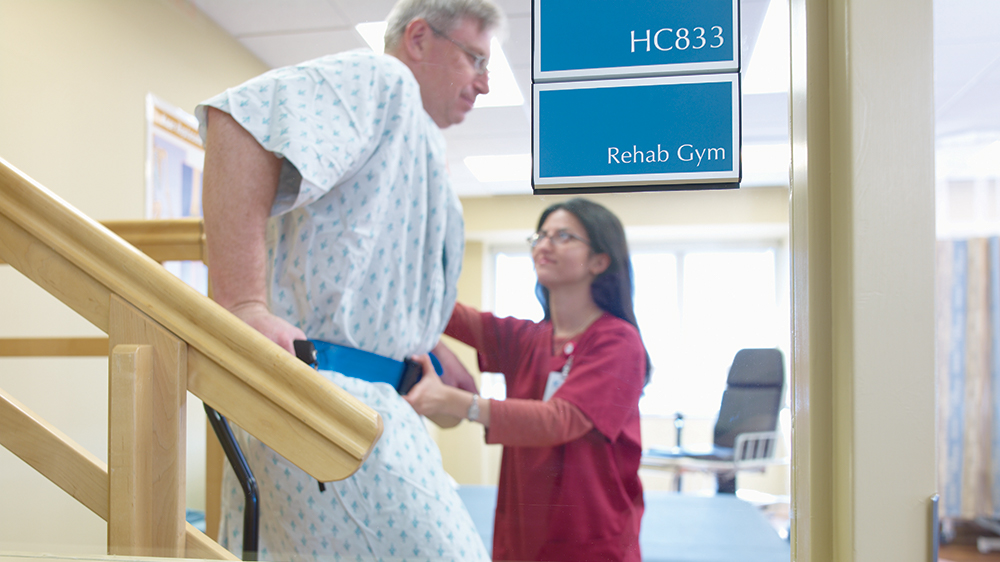When Osteoarthritis Calls for Surgery
December 21, 2020
Categories: Health Conditions, Joint Services
If you’re having trouble bending to tie your shoes or climbing stairs, you may be suffering from osteoarthritis. Osteoarthritis is the most common joint disorder in the United States, affecting more than 30 million adults, and that number is increasing thanks to our aging population. Osteoarthritis occurs when the cartilage and bones within a joint begin to break down. It can affect any joint, but it most frequently occurs in the knees, hips and hands.
Symptoms of Osteoarthritis
The hallmark of osteoarthritis is pain or aching in your joints, which causes you to experience difficulty doing daily activities like walking or climbing stairs. Pain is often accompanied by stiffness in the joints, decreased range of motion, and swelling. The symptoms of osteoarthritis typically get worse over time. When the pain and swelling begin to interfere with your daily life, you should see your doctor.
What Causes Osteoarthritis?
Osteoarthritis is most commonly caused by trauma from an injury or overuse of the joints. Athletes, members of the military and people who work physically demanding jobs are more prone to developing osteoarthritis as they age. Women are more likely to develop osteoarthritis than men, especially women over the age of 50. Other risk factors include obesity, which puts more stress on your joints, and genetics. If you have a family member who has osteoarthritis, you’re more likely to develop it.
How is Osteoarthritis Treated?
If you’re exhibiting the signs of osteoarthritis, your primary care doctor may treat you with first-line therapies like pain medications or refer you to a rheumatologist who specializes in arthritis and other related conditions. Non-surgical treatment for osteoarthritis typically includes a combination of therapies such as pain medications, physical therapy and exercise.
If you’re overweight, your doctor may recommend weight loss to relieve some of the pressure on your joints. If these treatment options are not effective, the next step is usually surgery. Surgical options involve joint repair or joint replacement such as a hip replacement.
Douglas Murphy, MD, is an orthopedic surgeon at Holy Cross Germantown Hospital who specializes in total joint replacement. He says hip replacements have advanced over the last five to ten years. “It’s a smaller incision,” Dr. Murphy says. “It's done through the front of the thigh as opposed to the back of the thigh. There are two things about it. Number one, it's less painful and people could rehabilitate much, much faster than they used to. The other thing is it reduces and in many cases almost eliminates the risk of dislocating the hip joint after surgery.”
Treatment for Osteoarthritis
Watch Douglas Murphy, MD, orthopedic surgeon at Holy Cross Germantown Hospital, discuss when surgery is needed to treat osteoarthritis.
Information About Joint Care


